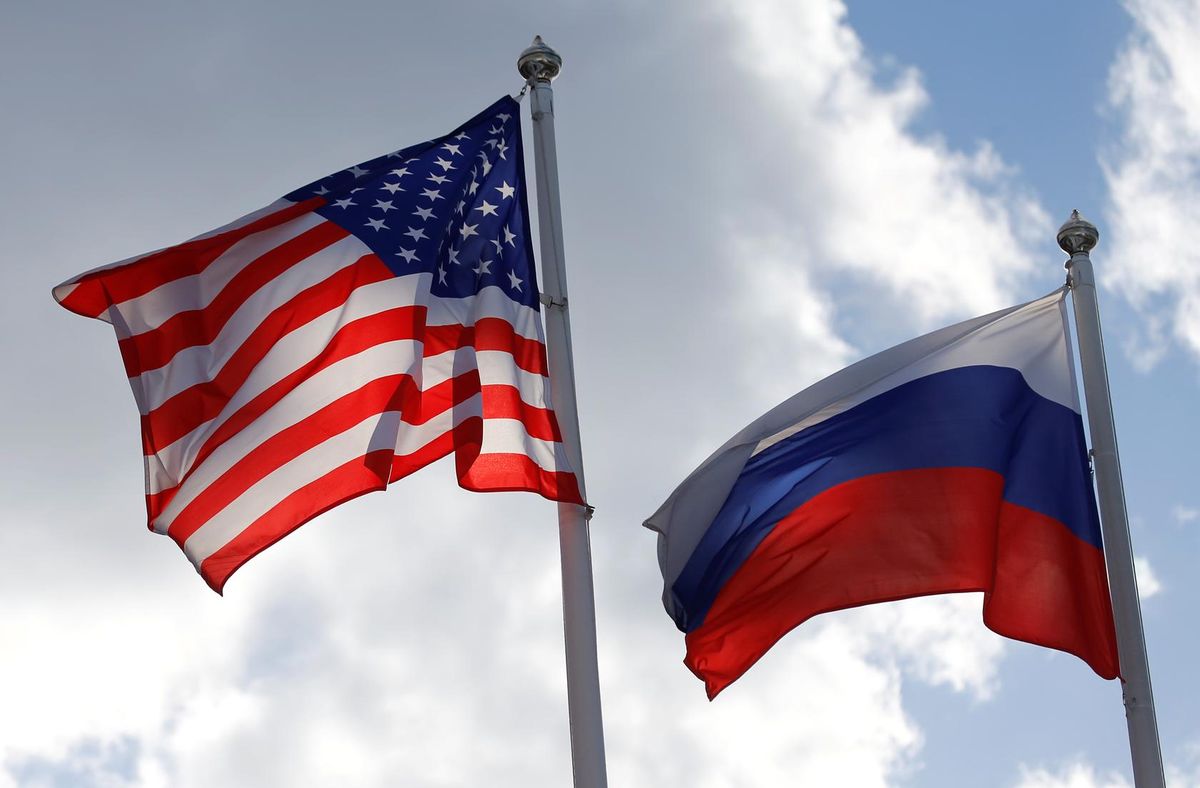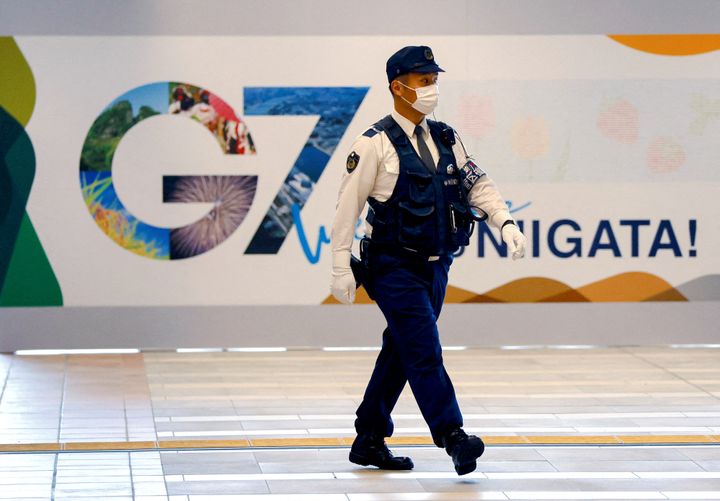The history of Russian spies in the United States

A few minutes every morning is all you need.
Stay up to date on the world's Headlines and Human Stories. It's fun, it's factual, it's fluff-free.
While the idea of spies infiltrating the US may feel like a throwback notion from the Cold War, in the three decades since the Russian Federation supplanted the fallen Soviet Union, Russian spies have remained a persistent issue for US intelligence.
In August, a former United States Army Green Beret named Peter Rafael Dzibinski Debbins was arrested on charges that he had served as a spy for Russia. On November 18, Debbins, whose Russian codename was Ikar Lesnikov, formally pleaded guilty to charges of espionage, capping a 15-year career as a double agent that lasted from 1996 to 2011.
Debbins’ military career and work as a Russian spy began in Minnesota, where he grew up. In 1996, while training in the Reserve Officers Training Corps (ROTC) at the University of Minnesota, he was simultaneously meeting with the Russian Main Intelligence Directorate of the General Staff (GRU; Glavnoye Razvedyvatelnoye Upravlenie), which had recruited him.
Debbins’ mother was from Russia. As a student, he met his future wife, Yelena Selyutin, while involved in a study-abroad program in Chelyabinsk, a city in the European part of Russia.
Debbins was on active duty in the US Army from July 1998 through December 2005. A portion of that service, from 2003 to 2005, was spent in the Special Forces. He was deployed to multiple countries around the world, including South Korea, Azerbaijan and Georgia. In all that time, he was passing on information to Russia, including about his fellow Green Berets.
It’s a remarkable story, one that reveals an alarming breach in US intelligence. It also underlines the fact that international espionage has not gone completely digital.
In recent years, Russia has frequently been accused of cyberespionage, including hacking government systems and using disinformation to influence US elections. As Spain learned in 2019, though, Russian spies work in the field as well.
While the idea of spies infiltrating the US may feel like a throwback notion from the Cold War, in the three decades since the Russian Federation supplanted the fallen Soviet Union, Russian spies have remained a persistent issues for US intelligence. (At the same time, US citizens, like American diplomat Ryan Fogle, have been accused of serving as spies in Russia.)
Although there was a relatively warm relationship between Russia and the US under Russian President Boris Yeltsin, in the two decades since President Vladimir Putin initially took office, it has cooled again. Yet, even under Yeltsin, Russia had spies living and working in the US.
These are the most notable examples of Russian spies living in the US.
Robert Hanssen and Aldrich Ames
During the Cold War, which lasted roughly from 1945 to 1990, the USSR and the US were both actively engaged in espionage.
Infamously, in 1950, the Federal Bureau of Investigation (FBI) arrested Julius and Ethel Rosenberg for allegedly passing US nuclear secrets to the Soviets. Both were found guilty and executed in 1953 in a case that tantalized and shocked the American people. Some still maintain that the Rosenbergs were falsely accused.
Nevertheless, Soviet spies on American soil were a common trope of Cold War novels and films. As it has turned out, though, it wasn’t mere fiction. Years after the Soviet Union collapsed, two separate men with high-level clearance in US intelligence were discovered to have been spies for the USSR and, eventually, Russia.
The first was Aldrich Ames, a veteran of the Central Intelligence Agency (CIA) who was arrested in 1994. He, along with his wife, Rosario Ames, was accused of sharing secrets with the USSR’s Committee for State Security (KGB; Komitet Gosudarstvennoy Bezopasnosti) and to the KGB’s successor agency, the Foreign Intelligence Service (SVR; Sluzhba vneshney razvedki).
As an agent with the CIA, the American-born Ames specialized in Russian intelligence. In 1985, he decided to work for the KGB, who initially paid him US$50,000. Ames passed on information about the CIA and FBI, including the identities of sources inside the USSR who were later executed. After being caught, Ames pled guilty and is still serving his sentence in federal prison.
An even more successful – and long-serving – spy was Robert Hanssen, who was arrested in February 2001 and sentenced to life in prison for 15 counts of espionage. Hanssen was an agent of the FBI who, for over two decades, fed secrets to both the KGB and SVR. Hanssen is considered “the most damaging spy in FBI history.”
Hanssen’s efforts on behalf of Russia included sharing “Top Secret” coded documents and revealing the names of Russian double agents who were working for US intelligence. Some of those agents were executed by the USSR.
Hanssen was discovered through an ongoing US intelligence operation to unearth double agents following the discovery of Ames. He remains incarcerated with no possibility of parole.
The 10 spies who inspired “The Americans”
In 2013, the FX network launched “The Americans,” a six-season, Emmy-nominated drama about two Soviet spies and their two children living in the US under the guise of being a normal American family. The television show was a critically adored examination of the last years of the Cold War. It was also based on real life.
Unlike “The Americans,” though, the spy story that inspired the show’s creator, Joseph Weisberg, took place after the fall of the USSR.
In 2010, an FBI investigation named “Operation Ghost Stories” successfully unearthed 10 Russian spies operating in the US, or “illegals” as they were known. They were Russian-born spies who were trained to speak English and had carefully created “western” backstories. The 10 lived throughout the US and most used fake names.
Of the 10, eight made up four couples: Richard and Cynthia Murphy (real names: Vladimir and Lydia Guryev), Michael Zottoli and Patricia Mills (real names: Mikhail Kutsik and Natalia Pereverzeva), Donald Heathfield and Tracey Lee Ann Foley (real names: Andrei Bezrukov and Elena Vavilova), and Juan Lazaro (real name: Mikhail Vasenkov) and Vicky Peláez (who was originally from Peru, not Russia).
The other two spies were Mikhail Semenko and Anna Chapman, who both arrived separately in the US in 2009. Neither Semenko nor Chapman used fake names as they both came in via legitimate means, Semenko on a student visa and Chapman for business after having attained British citizenship through marriage. Both were Russian nationals and made no effort to hide that fact.
Like the characters in “The Americans,” Heathfield and Foley had two children who were unaware of their parents’ roles as Russian spies. The couple was celebrating the birthday of their eldest son when the FBI arrived at their Boston home to arrest them on June 27, 2010.
Despite the elaborate and drawn-out effort – some of the spies arrived in the US in the 1980s – the “illegals” program was deemed a failure and an embarrassment for Russia. According to the FBI, none of the spies were able to attain any important information. All pled guilty and were deported back to Russia in exchange for four US and British spies captured by Russia.
Anna Chapman, who received the most media coverage due to her good looks (she was called Russia’s “most glamorous secret agent”), has parlayed her fame into a modeling career back in Russia. She has also used her Instagram page to express support for President Donald Trump and to criticize other world leaders.
Maria Butina
In July 2018, a woman by the name of Maria Butina was arrested by the FBI. Butina was technically an “agent” of Russia, as opposed to a spy. She was a known Russian citizen, but her connection to the Kremlin was obscured. Her mission in the US was to push policies friendly to Russia by infiltrating influential organizations and building ties with powerful figures in American politics.
Most notably, Butina developed connections within the National Rifle Association (NRA), the pro-gun lobbying organization with considerable influence with the Republican Party. Butina’s goal, according to the FBI, was to initiate “back channel communication” through her contacts at the NRA to government officials.
During her time in the US, Butina was photographed alongside many prominent figures and politicians, including the executive vice president of the NRA, Wayne LaPierre, and former US Senator Rick Santorum.
In October 2019, after serving a portion of her 18-month sentence, Butina was released from jail and deported back to Russia. She has insisted her intentions were never to hurt the US.
Butina’s story gained greater attention partly because it was occurring at the same time US President Trump was being investigated for allegedly collaborating with Russia during the 2016 election.
That investigation, led by Special Counsel Robert Mueller, ultimately did not establish a direct collaboration between the Trump campaign and Russia. However, multiple people in Trump’s orbit had secret meetings with Russian agents, including his son, Donald Trump Jr., and his first national security adviser, Michael Flynn.
Have a tip or story? Get in touch with our reporters at tips@themilsource.com




Comments ()